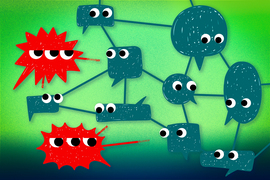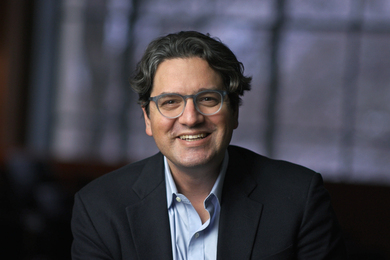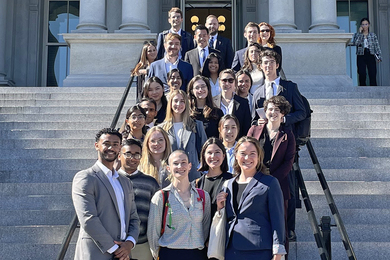Over 180 world leaders maintain social media accounts, and some of them issue policy warnings to rivals and the public on these platforms rather than relying on traditional government statements. How seriously do people take such social media postings?
A new study suggests the general public and policymakers alike take leaders’ social media posts just as seriously as they take formal government statements. The research, by MIT political scientists, deploys novel surveys of both the public and experienced foreign policy specialists.
“What we find, which is really surprising, across both expert audiences and public audiences, is that tweets are not necessarily seen as this form of cheap talk,” says Erik Lin-Greenberg, an MIT faculty member and co-author of a new paper detailing the results. “They’re viewed as the same type of signal as that being offered through more formal and traditional communications.”
The findings suggest that people have become so fully acclimatized to social media that they regard the medium as a vehicle for messages that have just as much credibility as those generated through the old-school method, in which official statements are released in formal language on official government documents.
“One clue that sheds some light on our unexpected findings is that a slight majority of our survey respondents who read a tweet identified what they read as a White House press release,” says Benjamin Norwood Harris, an MIT doctoral candidate and co-author of the paper. “Respondents really seemed to believe that tweets were just another way presidents communicate in their official capacity.”
The paper, “Cheap Tweets?: Crisis Signaling in the Age of Twitter,” appears in the June issue of International Studies Quarterly. Greenberg is the Leo Marx Career Development Assistant Professor of the History and Culture of Science and Technology at MIT; Harris is a PhD candidate in MIT’s Department of Political Science who specializes in security studies and international relations.
The study fits into a larger body of political science research in the area of “crisis signaling” — the way words and actions in international relations are interpreted, which is often critical to diplomacy. However, when it comes to the use of social media, “There’s been very little research that looks at the credibility of public signals,” Lin-Greenberg notes.
The research consisted of a multilayered set of surveys, conducted in 2021. Using the survey platform Lucid, the scholars surveyed 977 members of the general public about a hypothetical confrontation between the U.S. and Iran, using facsimiles of messages on Twitter (now known as X) and formal White House statements that might have been sent by U.S. President Joe Biden during such a scenario. Separately, the scholars also recruited foreign policy experts from the U.S., India, and Singapore, which all have active English-language think tank spheres, to take the same survey.
Asked to rate the credibility of tweets and official statements on a five-point scale, the public rated official press releases at 3.30 and tweets at 3.22. The policy experts gave a 3.10 rating to the official statement, and a 3.11 rating to the tweets.
“No matter how we cut the data, we just don’t see much difference in how respondents rated Tweets versus official statements,” Harris says. “Even when we vary the formality of the tweet language — including things like all caps and lots of exclamation points — we don’t find an effect.”
A follow-up layer of the survey then asked respondents about a related hypothetical conflict between the U.S. and Iran in 2026, with facsimile tweets and White House statements attributed to both Biden and former president Donald Trump, given that either could be president then. The aim was to see if different leaders influenced perceptions of the two forms of statements.
But in this instance, the public and policy experts regarded tweets and official statements virtually equally seriously. Trump’s statements were given slightly more credibility overall, but with a strong partisan divide: Liberals took Biden’s statements to have more credibility, and conservatives took Trump’s statements to have more credibility.
Overall, the study suggests that many people are simply unaffected by the medium in which a global leader might choose to issue a warning to leaders of other nations. In the surveys, participants were given the opportunity to describe qualitatively what shaped their responses; only about 2 percent cited the medium as an issue.
As Harris notes, the survey data also indicate that slightly more than 51 percent of respondents believed a tweet constituted an officially released government statement. Additionally, about 73 percent of respondents thought tweets were generated in the same way as statements that have the official imprint of a national government.
“People who see a tweet don’t really differentiate it in their minds. They don’t think the tweet is not an official statement,” Lin-Greenberg says. “About three-quarters of the population think it’s coordinated, whether it’s a tweet or an official statement.”
In the paper, the scholars suggest there is considerable room for follow-up research in this area. Among other things, future studies might compare the effect of social media statements to other types of communication, such as speeches. Scholars might also study other social media platforms or broaden the set of countries being studied. Such research, Lin-Greenberg and Harris conclude in the paper, “will further enrich our understanding of the interactions between emerging technology and international politics.”










